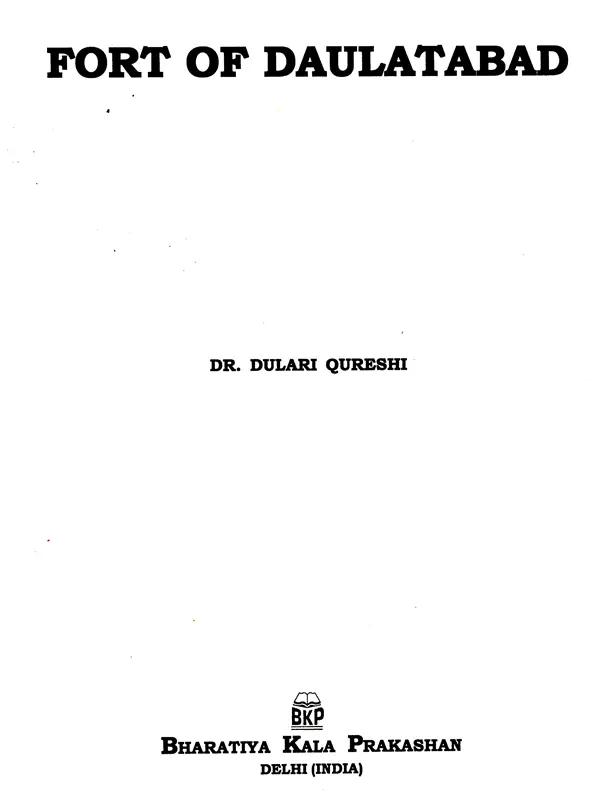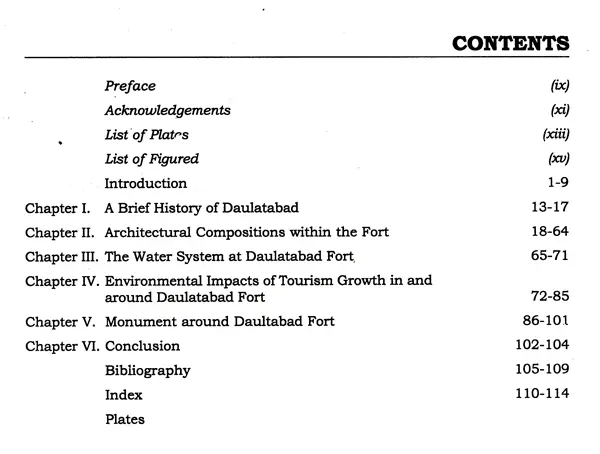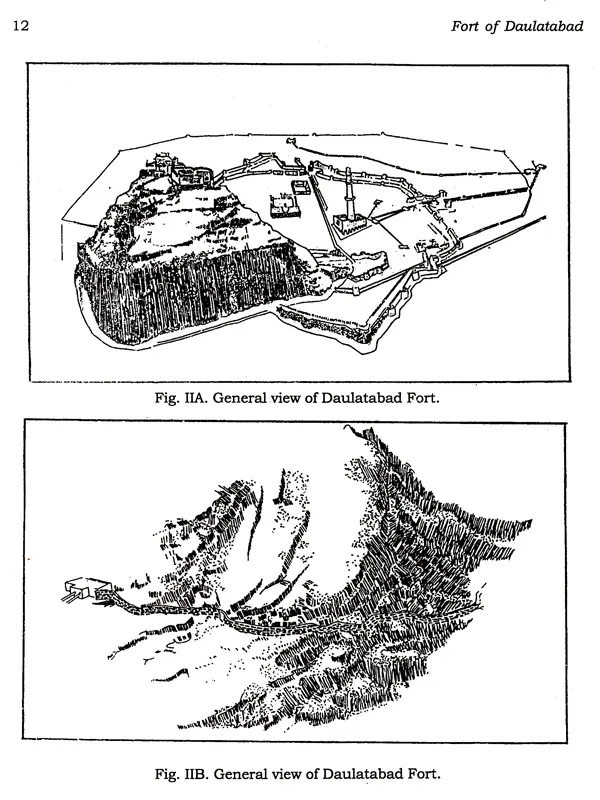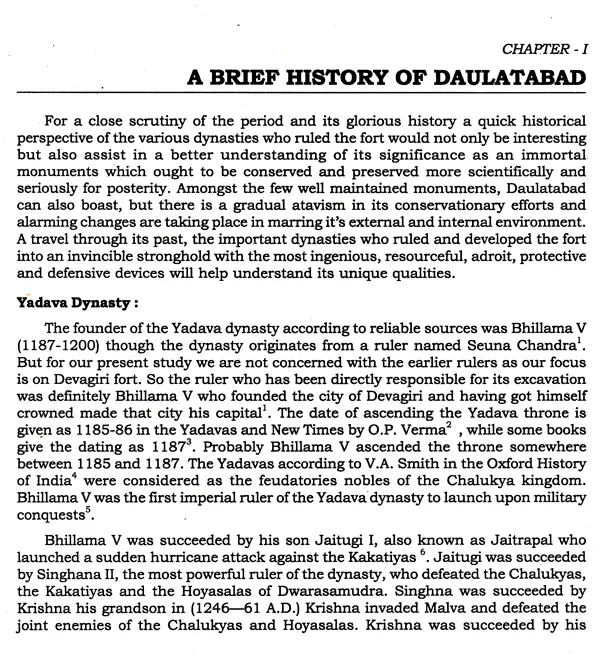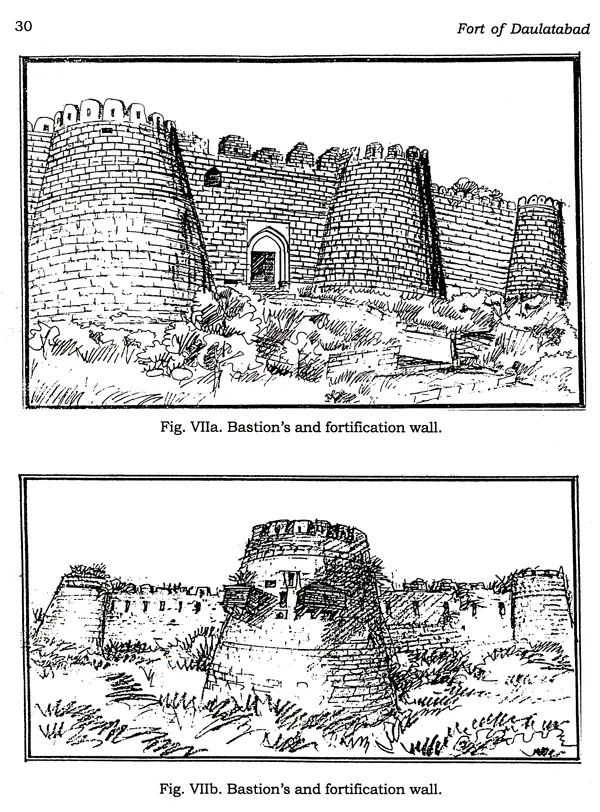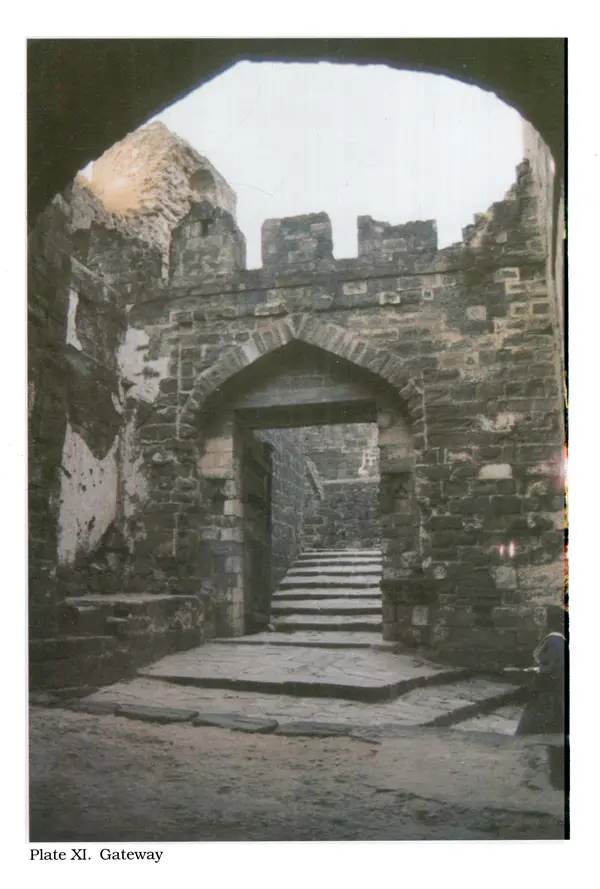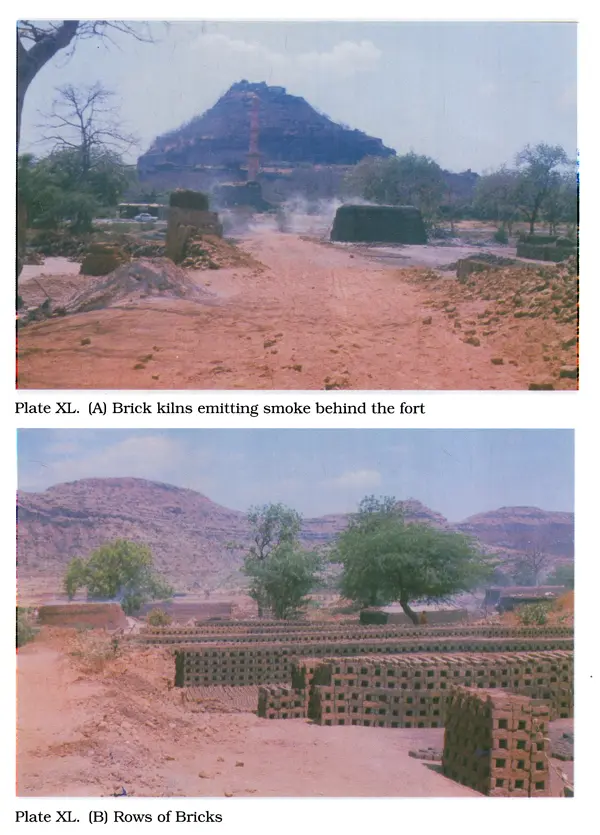ABOUT THE BOOK The present book, "Daulatabad Fort", throws light on all the architec tural creations in and around Daulata bad Fort. The fort was excavated by Bhillama IV of the Yadava dynasty and successive dynasties who conquered the fort have continuously added to its rich architectural buildings. The book includes a brief history of the fort. But the main focus of the book is on its architectural strength that includes the giant, formidable fortification walls, with features like battlements, bastions, gates, etc. The fort has a broad moat with a wooden bridge connection, caves in the interior, temples, masjids, step wells, tanks, etc. which have been described at length. It also contains details of palaces, built by various dynasties, their architectural features, etc. The landmark of Daulatabad Fort is 'Chand Minar' or 'Tower of Victory', which has been described at length. The book also throws light on the water system of the period.
Besides the architectural remains, the book has taken special pains to assess and evaluate the present con dition of all these remains. The environ mental impact of development due to tourism, around the fort, at the same time failure of the authorities at planned conservation and preservation of the fort has also been measured, gauged and appraised.
The book has further attempted to identify all major problem areas and offered useful suggestions for a planned development and expertise to create a more satisfactory experience for the tourists.
ABOUT THE AUTHOR Dr. Dulari Qureshi, who hails from Aurangabad, is a highly learned and articulate academician, has made a distinguished mark in the intellectual circles. She holds a Doctorate in Art History; the topic of her thesis being, "Art and Vision of Aurangabad Caves published later by Bharatiya Kala Prakashan, Delhi. She is also armed with a degree in Journalism and a post graduate diploma in Tourism. She bas four books to her credit and two more are under publication. She has written 270 articles on art, culture and tourism development and its impacts on monu ments, which have been published in the leading dailies, magazines, and journals. Her articles have been pub lished at the regional and national level, and have received wide recognition. In her own historical city of Aurangabad (Ajanta and Ellora fame) she has created awareness amongst all local tourism related agencies, as well as schools, colleges and universities at conserving and preserving the local monuments for posterity and instilled pride amongst Its through her continous articles them. Its on heritage of Aurangabad, and and its significance that the Govern historical ment's attention was drawn. The out come of her immense efforts was the establishment of a Heritage Committee formed by the Municipal Corporation of Aurangabad of which she is a mem ber. Apart from this she is also a mem ber of various committees at regional and national level like Antiquities Expert Committee, Mumbai and Ellora Aurangabad festival of which she is a Chairperson of cultural events and the Joint Secretary. She is also on the editorial board of the monthly magazine 'Art and Glamour on art, culture, heritage and tourism. She has worked as a free lance journalist for Times of India between 1996 and 1999.
She is presently teaching in the Department of Tourism Administration, Dr. Babasaheb Ambedkar Marathwada University, Aurangabad.
PREFACE In the world of art and architectural scholarship I owe my initial training to Late Dr.Ramesh Shankar Gupte, my father, who has authored several books on Ajanta, Pllora and a number of other cave temples of India. As authority on iconographical studies, he presented me with a deeper perception of cave temples in analyzing minute details of each and every aspect which otherwise would escape one's attention. After my father's untimely death my learning process was passed on to Dr. R.S. Morwanchikar, my guide and guru who assisted me in a more scientific process of studying and examining a monument as it is closely related with the study of art and architecture, that was when I developed a practice f examining, scanning and observing every detail not only concerning the monument but around the monument and its surrounding.
In the present book I have tried to accomplish a pleasant assignment which my publisher had thrust on me as there was no single book on Daulatabad fort while the other forts of India were much in focus due to several books available on them in the market. I have long felt that our traditional method of writing on art and architecture does injustice to the present status of several ancient and medieval structures especially if we admit only limited aspects of descriptive analysis of a monument. I have slightly deflected by including not only the historical and architectural aspect but also rather included the present status of each and every structure and what is required for its long standing survival.
I have however refrained from including the social, economical, literary or religeous aspects of historical study but preferred to restrict myself to a brief history and architectural study of the structures in and around the fort. However, I have also undertaken several educational tours for the students of my department of Tourism, I had consistently been drawn to the shortcomings and weaknesses of our tourist destinations, reason why I decided to examine the surroundings of the fort and understand the 'why's of the deterioration and erosion of the structure the shabby conditions of its environments which are responsible in reducing the pleasant experiences of the tourist while moving in and around the fort.
I do not need to be told how absurd this enterprise is, or how immodest is its very conception. An attempt to relate both architecture and tourism might not really be appreciated by those who would rather like to limit architectural studies.
**Contents and Sample Pages**
